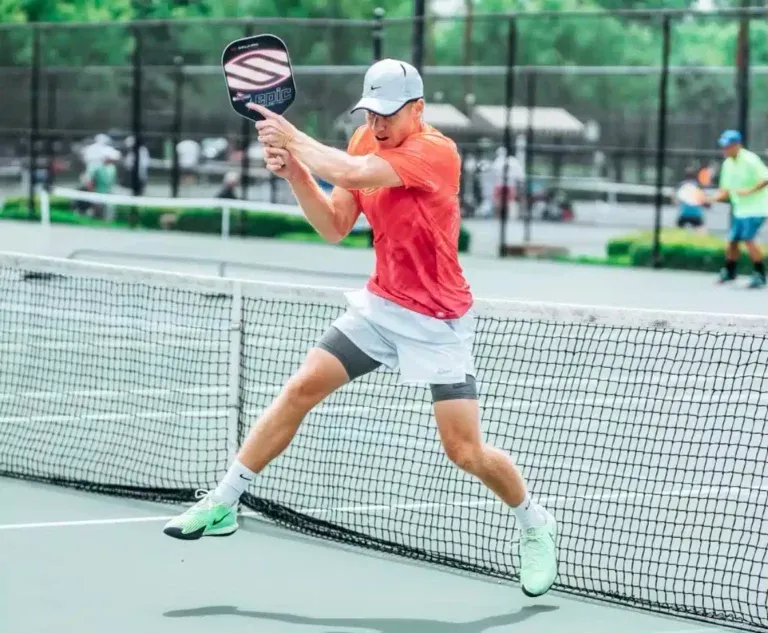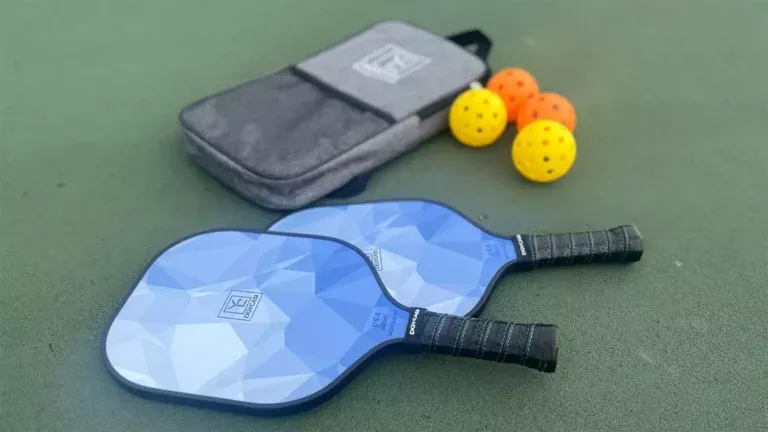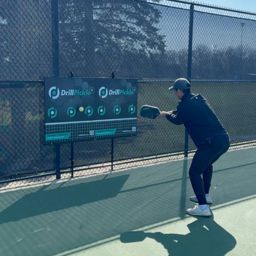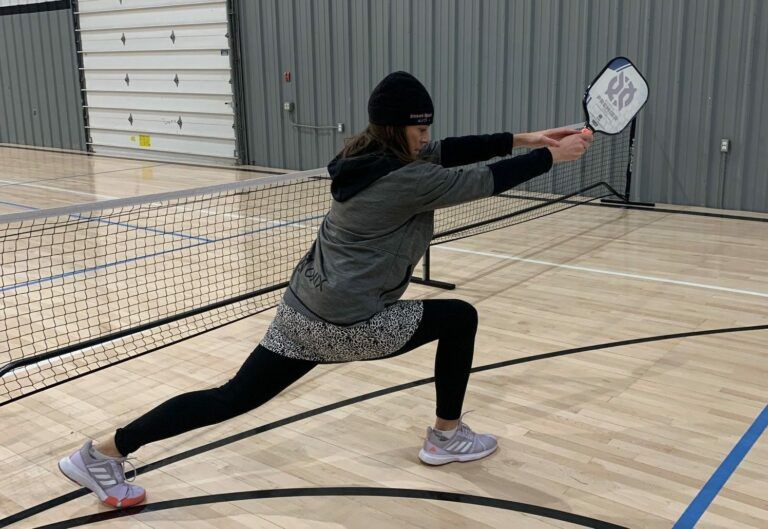Why drills are your secret weapon to pickleball success
When it comes to improving your performance in pickleball, the importance of consistent practice cannot be overstated. Drills serve as the backbone of your training; they are the routes on a map leading to skill mastery. Much like how neurons strengthen with every signal they send, your muscle memory develops with each repetition you commit to during practice. When you consistently engage in specific drills, your brain builds neural pathways that allow movements to become faster and more automatic, akin to the smoothness with which a child learns to ride a bicycle.

Kobe Bryant, a paragon of dedication in sports, once emphasized the significance of perfecting fundamental drills, stating, “Repetition is the mother of success.” This philosophy underscores how essential it is to focus on the basic skills, regardless of your experience level. Drills help you etch these techniques into your muscle memory so that when it’s game time, executing shots feels natural and instinctive. Embrace the grind of repetitive practice, and you will witness the transformation in your gameplay.
Beyond random play: The benefits of structured practice
While casual play can be enjoyable, it often lacks the structured guidance that comes from purposeful drills. Engaging in structured practice allows beginners to target their weaknesses, ensuring that they are not only improving but are also aware of their limitations. Through drills, players get the chance to hone specific skills and shot types that may be infrequently encountered in a recreational game.
Insights show that formal drills fast-track skill development by isolating particular aspects of the game, whether it be improving dinking techniques, practicing serves, or enhancing volley accuracy. Each drill is a focused exercise designed to bring your weaknesses to light and provide you with concrete steps to improve upon them. In contrast to more chaotic game play where score-taking takes precedence, drills allow you to focus entirely on technique, helping to build the foundational skills that can later be utilized in competitive scenarios.
Essential gear and pickleball basics
Before you hit the court, it’s crucial to gear up appropriately. Just as a knight wouldn’t enter battle without his armor, a pickleball player needs the right equipment to ensure success and safety during play. First on your list should be selecting the right paddle.
Gearing up for success: Choosing the right paddle and more
Beginner-friendly paddles tend to be lightweight and have larger hitting surfaces. When choosing a paddle, consider factors such as grip size and paddle material. A comfortable grip can enhance your control, while a paddle made of composite materials can provide a good balance of power and control. Additionally, it's essential to wear comfortable athletic attire and supportive footwear that will keep you agile and stable on the court.

Besides paddles, you must also consider the type of pickleball you’ll be using. Pickleballs come in different compositions and sizes, impacting how they react upon impact. For outdoor play, opt for durable, weighty balls, while lighter plastic balls are better for indoor games.
Understanding the court: Rules, scoring, and key terms
Comprehending the rules and measurements of the court is paramount for every player stepping onto the field. The pickleball court is divided into two sections, with a non-volley zone, commonly known as "the kitchen." It's essential to know that while standing in this area, you cannot hit the ball before it bounces; understanding this rule is fundamental to mastering dinking.

Key terms to know:
- Kitchen: The non-volley zone near the net.
- Baseline: The back boundary of the court.
- Dinking: Soft shots aimed at forcing mistakes from opponents.
- Volley: Striking the ball before it bounces.
- Third Shot Drop: A strategically vital shot that follows the serve and return sequence.
Having a clear grasp of these terms and the overall rules will elevate your gameplay and foster better communication with your partners and opponents.
Level 1: Foundational pickleball drills
Now that you have your gear and understand the court, it’s time to delve into the drills that will lay the groundwork for your pickleball journey. Each drill serves as a stepping stone, gradually enhancing your capabilities and building essential skills.

Paddle up: Building a solid foundation
The “paddle up” drill is a simple yet effective exercise focusing on improving hand-eye coordination and ball control. To perform this drill, begin with a partner or against a wall. Have them toss the ball at a low height, and practice catching it with your paddle while maintaining appropriate stance and grip.
Tips for maximizing this drill:
- Position yourself correctly to ensure easy access to the ball.
- Maintain a relaxed grip; this enhances shock absorption upon impact.
- Gradually increase the speed and height of the toss for additional challenge.
Mastering this drill is akin to creating a sturdy structure; it sets a solid foundation that translates directly into better control during gameplay.
Selfie ball bounce: Developing a soft touch
Next up is the “selfie ball bounce” drill, designed to enhance your paddle control while nurturing your ability to develop a soft touch with the ball. This technique is crucial for dinking and volleying, as it enables you to control shots effectively.
To execute the selfie ball bounce:
- Stand in a controlled area and bounce the ball against the wall, trying to catch it with your paddle.
- Vary the height and force of your bounces to refine your touch.
- Use proper footwork to position yourself accordingly.
By repeatedly practicing this drill, you will find it easier to execute gentle, controlled shots during matches, ultimately making your gameplay more dynamic.
Shadow swings: Perfecting your form
The “shadow swings” drill allows you to practice without the pressure of hitting a moving target. Focus on your technique by performing your forehand and backhand swings in the air, ensuring that you maintain ideal form and mechanics.
Specific instructions for shadow swinging:
- Ensure your paddle starts in a non-dominant position before moving through the swing.
- Keep your knees bent and weight equally distributed for better balance.
- Perform slow and controlled movements, focusing purely on form.
By committing time to this drill, you not only foster muscle memory but also work to prevent injury that can arise from improper techniques.
Level 2: Serving and returning like a pro
With your foundational skills established, it’s time to take your training up a notch. Serving is a pivotal element in pickleball, and mastering it sets the tone for how each point unfolds.
Toss and catch: Mastering the serve
The “toss and catch” drill hones your serve by emphasizing consistency in the toss and contact with the paddle. To practice, stand with your paddle ready, and toss the ball into the air before catching it with your paddle.
Tips for maximizing this drill:
- Focus on the height and trajectory of your toss.
- Pay attention to grip and shoulder alignment for even contact.
- Gradually begin making contact with the ball instead of catching it.
A consistent and controlled toss is your ticket to a successful serve; mastering this will enhance your reliability on the court.
Serve to target: Dialing in your accuracy
Once you feel confident with your serve, introduce the serve to target drill. This involves serving the ball to designated areas on the court, enhancing your accuracy and placement over distance.
- Set up cones or markers in different sections of the opposite court.
- Serve the ball aiming for each marker one by one.
- Track your progress and adjust aim and power as needed.
Aiming for specific targets during serving helps maintain pressure on your opponents, allowing you to create early advantages.
Deep returns: Setting up your attack
Another crucial aspect of gameplay is returning serves effectively. Practicing deep returns gives you the necessary time to advance to the net. To engage in this drill:
- Have a partner serve the ball deep.
- Focus on returning it with depth toward the baseline.
- Prioritize your footwork and paddle position to encourage consistent depth in your returns.
By mastering deep returns, you'll not only pressure the serving team but also position yourself for a strategic offensive.
Level 3: Conquering the kitchen: Dinking and volleying
Now that you’ve sharpened your serving and returning skills, let’s explore the art of dinking and volleying elements that truly define the dynamics of pickleball.
Dinking: The pickleball chess match
Dinking is akin to a chess strategy; it requires finesse, precision, and thoughtful placement. It's vital in creating opportunities for attack. Introducing the “triangle dinking drill” enables you to practice hitting dinks to specific target areas, building strategic decision-making in your gameplay.
Key points to focus on during this drill:
- Grip and paddle angle (soft hands are crucial!).
- Aim for low trajectories that maintain a controlled pace.
- Work on varying the speed and angle of your dinks.
Mastering dinks positions you for success and allows your strategic thinking to shine during matches.
Two up, two back: Mastering dink rallies
The “two up, two back” drill simulates real-life dink rallies, emphasizing teamwork and shot selection. This practice promotes the importance of patience, as you learn to engage in extended rallies without forcing unforced errors.
Strategies during this drill:
- Coordinate with partners to maintain communication.
- Focus on hitting to each other’s weaker side.
- Change pace to keep your partner engaged.
This drill cultivates resilience in dinking and paves the way for victory in tighter matches.
Volleys: Taking control at the net
Finally, embracing the concept of volleying is crucial for mastering net control. Engaging in the “pickleball volley” drill allows players to hit the ball back and forth without it bouncing.
Emphasize these points during practice:
- Quick reflexes and readiness for a swift reaction.
- A firm grip with proper positioning to enhance reach.
- Focus on fluid movement and footwork to navigate the net effectively.
A solid volley technique bolsters your effectiveness during gameplay and aids in achieving control at critical points during matches.
Level 4: The game-changing third shot drop
Transitioning from offense to defense can be challenging, and that’s where the third shot drop comes into play. This pivotal shot allows players to gain control of the net after receiving the serve.
Wall drops: The path to drop shot mastery
The “wall drops” drill is a highly effective exercise for mastering the drop shot technique on your own. To practice this drill:
- Stand a few feet away from a wall.
- Hit the ball softly against the wall, focusing on achieving a gentle landing right in front of the kitchen line.
- Gradually work on controlling the same distance in varying speeds.
Mastering the soft drop shot is essential for unsettling opponents and taking control of the net, fostering a more tactical approach to the game.
Return and drop: Putting it all together
The “return and drop” drill seamlessly combines returning serves with executing third shot drops. It enhances your ability to transition smoothly from defense to offense.
Key tips for this drill:
- Recognize shot opportunities to execute the drop shot.
- Maintain awareness of the spacing and positioning of both players.
- Fine-tune your paddling technique based on the nature of the return shot.
This strategic awareness will empower you during critical points in matches, providing a decisive edge over your opponents.
Level 5: Advanced drills and game-like practice
With foundational skills firmly established, it’s time to tackle advanced drills that simulate real game scenarios. These practices challenge your abilities and prepare you for competition.
Space invaders: Moving to the net with purpose
Engage in the “space invaders” drill to focus on hitting reset shots while strategically advancing toward the non-volley zone. This simulation mirrors common game scenarios where positioning is vital.
- Hit reset shots to keep the play alive while moving toward the net.
- Develop a rhythm that allows you to transition forward smoothly.
- Utilize proper footwork to maintain your spacing during the drill.
This drill emphasizes positioning and decision-making, critical aspects of advancing to the net.
Skinny singles: Putting your skills to the test
The “skinny singles” drill is an engaging way to put everything you’ve practiced into a game-like setting. By playing on a modified court area, you will test your skills in all aspects of gameplay.
- Create boundaries to designate your smaller playing area.
- Engage in singles matches that incorporate all the skills you’ve practiced.
- Focus on honing your shot selection and adaptability.
This drill offers a fun and competitive environment to practice, reinforcing the skills built in previous drills.
Fast hands drill: Lightning-quick reflexes at the net
Lastly, the “fast hands” drill enables you to sharpen your hand speed and reaction times essential for successful volleying at the net.
- Work with a partner to practice rapid exchanges, increasing the pace gradually.
- Focus on rhythm while minimizing pauses between shots.
- Engage in regular rotations of both players to develop all-around reflexes.
Developing quick hands further enhances your defensive and offensive strategies during matches.
Beyond the drills: Tips for maximizing your practice
The journey doesn’t end with completing these drills; continual improvement is key to mastering pickleball. Set concrete goals and track your progress over time to visualize your growth.
Set clear goals and track your progress
Establishing target benchmarks can motivate you to refine your skills consistently. Using technology and tools like apps or journals can help keep tabs on your development, while also serving as features that encourage accountability in practice.
Find a practice partner and have fun!
Lastly, never underestimate the power of community and camaraderie. Finding a practice partner not only diversifies your gameplay but also fosters a fun and encouraging environment. Enjoying the process together will keep you both engaged and committed, ensuring that you continue to level up in your skills.
In conclusion, mastering the essential drills in pickleball is not just a means to improve it's a gateway to deeper enjoyment and satisfaction in the sport. Whether you're refining your serves, conquering the kitchen, or showcasing quick reflexes, remember that each practice session is a building block to greater achievement. Embrace the drills, relish the journey, and allow your enthusiasm to guide you as you transition from beginner to pickleball pro.










